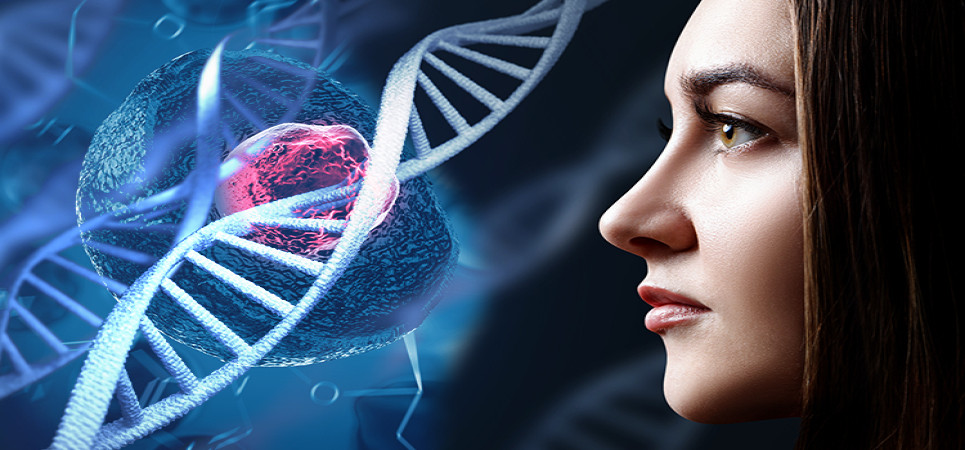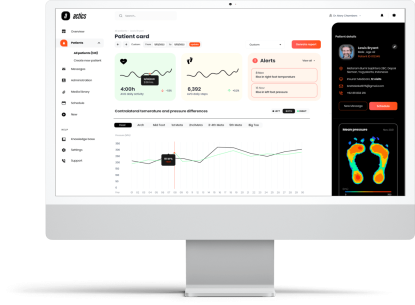
- April 4, 2025
- 1 second ago
Cell-Lipo
The company specializes in harvesting high-quality SVF stem cells from fat tissue, immediately available for regenerative treatments in the aesthetic and orthopedic fields, using a patent-protected, innovative, and scientifically proven technology.
Key Points

- Cell-Lipo's RBs technology was proven to be the next-generation technology for harvesting SVF stem cells from fat tissue and has overcome all the disadvantages of currently available technologies.
- The technology is patent-protected, was developed at Tel Aviv Sourasky Medical Center Ichilov, and is used by the company under a global and exclusive licensing agreement.
- The company's founding team is comprised of leaders in their respective fields, with a record of successes and exits and rich experience in technological development, science and research, engineering, business management and development, and finance.
- The company addresses the aesthetic medicine market, which is experiencing accelerated growth and a projected CAGR of 14.7% (2023-2030), with a disruptive technology that can change the market and take significant market share from synthetic filling materials.
- In the future the company will expand its activity to another huge market, the orthopedic market, offering treatment for joint and soft tissue injuries and diseases, constantly growing with the eldering population & requirement for an active, pain-free lifestyle
- The company completed the development and manufacturing of the second operating prototype model and is ready to begin the second round of scientific & product design experiments.
- The regulation survey report the company received indicates an expected low and lenient regulatory threshold that will enable relatively simple approval, via a 510K FDA regulatory path.

The Problem
There is currently no efficient and safe process for harvesting high-quality stem cells from fat tissue!
Enzymatic stem cell isolation from fat tissue is unsafe for use in treating human beings, and various mechanical solutions developed as an alternative do not yield a large and steady quantity of high-viability stem cells.
Human fat tissue contains a large quantity of SVF-type stem cells, 100 times more than the number of stem cells in bone marrow!
Fat-derived SVF stem cells represent high therapeutic potential, attracting great interest in the medical aesthetic and orthopedic fields for the development of clinical and treatment protocols for regenerative healing.
SVF cells are a powerful tool for tissue regeneration and healing due to 3 main characteristics:
- Rapid tissue building & repair, by accelerated cell differentiation proliferation.
- Improved blood supply by stimulating the development of local blood vessels.
- Suppress inflammation by regulating the autoimmune system.
Therefore, the market awaits a simple and reliable product.
The enzymatic technique for harvesting SVF stem cells, which uses an enzyme as part of an “artificial digestion system” to disassociate the fat tissue and release the stem cells, is currently considered the gold standard for harvesting these cells. However, despite its efficacy in yielding a large quantity of quality cells, it has numerous disadvantages that limit its use. The disadvantages include a relatively long process (1.5-2 hours)that requires an extended period of both the patient and the medical team in the operating room, a regulatory burden for approved use of the enzymes, and the high cost of the process that requires the use of expensive materials, designated personnel, and complex equipment.
The FDA and the EU authorities do not approve the enzymatic stem cell isolation method, due to its high infection risk profile - the risk of enzyme residuals remaining in the mass, which may harm the patient's health following injection back into their body.
In recent years there have been numerous attempts to overcome the disadvantages of enzymatic dissociation of fat tissue, including various mechanical solutions, to replace this expensive, lengthy, and dangerous process. The various currently available mechanical technologies are unable to harvest a large and quality yield of SVF stem cells and preserve high cell viability. Therefore, the use of these stem cells does not meet the necessary clinical standards and does not provide physicians with a solid, scientifically based tool.
Due to the market need - to offer long-term effective treatment using autologous fat, the use of these methods is expanding gradually. The long-lasting effect over time and the need to repeat the process cannot be estimated, in addition to the patient's discomfort and additional costs. Furthermore, in all existing mechanical methods the cell yield cannot be reproduced, such that a different yield is obtained in every procedure, and the effectiveness of the procedure over time cannot be predicted.
The Solution
Cell-Lipo's RBs technology for harvesting quality SVF stem cells for immediate use at a clinical standard for powerful and reproducible treatments in the aesthetic medicine and orthopedic fields.
Cell-Lipo's RBs technology is a new method for harvesting SVF stem cells which succeeds in overcoming the disadvantages of the enzymatic technique and the various mechanical techniques. Using RB technology the company harvests a yield of clinical-grade stem cells, similar to the average yield obtained by enzymatic SVF isolation, and does so within less than 15 minutes. Taken together, these results demonstrate the feasibility of the Cell-Lipo method as a rapid, reliable, safe & affordable alternative for the enzymatic fat processing protocols.

Cell-Lipo's RBs technology is integrated as a closed medical system in a patent-protected device to enable rapid, simple, sterile, and cost-effective isolation of stem cells from fat tissue. This groundbreaking method, which is clean of enzymatic effects and reduces expensive treatment time, costs, and regulatory overload, serves as a sustainable alternative to the current enzymatic isolation method and has the potential to become the SVF stem cell isolation gold standard.
The technology was developed at Tel Aviv Sourasky Medical Center Ichilov by some of the best scientists and surgeons in the plastic surgery, aesthetics, and cell biology fields, and constitutes a breakthrough in the quality and quantity of stem cells harvested in the fat tissue dissociation process.
In recent years, many physicians have joined the aesthetics and beauty industry, adopting the robust healing properties of SVF treatments to help their patients fight aging processes and to provide treatments of long-lasting aesthetic results as patients require.

The aesthetics and beauty industry has undergone a fundamental change with the massive transition of specialist physicians to treatment protocols of injecting autologous stem cell-enriched fat as a filling material, replacing synthetic filling materials. The aim is to provide the safest and most effective cosmetic and aesthetic procedures to patients. These treatments are performed by physicians, who adopt novel research and science-based technologies that are fundamentally different from treatments performed by beauty clinics that use skin-filling materials.
In aesthetic treatments from an autologous implantation source, the aspirated fat is implanted as an alternative to engineered filling materials, that do not remain in place over time. Fat is an excellent filling material, and enrichment with SVF - which attracts great interest among experts, increases the biological resilience for improved fat integration and regeneration of cells and blood vessels, adding volume, elasticity, and vitality to the treated area.
Liposuction is the first stage in the fat implantation and SVF stem cell harvesting process. The most common and known method is liposuction using a cannula inserted under the skin.
Dr. Ziv Karni, one of the prominent developers and inventors of aesthetic laser applications in the world, developed a significant addition to the accepted liposuction technique, placing an optic fiber in the cannula through which a unique laser beam is transmitted and facilitating fat tissue dissociation during its aspiration.
This significant addition facilitates the liposuction process and preserves the vitality of the aspirated fat cells. An experiment conducted at Tel Aviv University proved the vitality level of 97% of the cells that were aspirated combined with the laser beam, compared to the vitality of 60-70% of the fat cells obtained in regular liposuction.
Harvesting a mass of fat tissue with high vitality in the liposuction process ensures quality “raw material” for the continued process and the biological products used for autologous implantation.
The RB technology, combined with laser-assisted liposuction, ensures a clean product with high biocompatibility and a reduced risk of immune or allergic reactions to the implantation. Furthermore, in most cases, the obtained product results in a more natural appearance of texture and flexibility, not only volume, and for a longer period compared to synthetic Fillers.

Target Market and Competition
The global medical aesthetic market is experiencing accelerated growth, with a market size valued at about USD 127.1 billion in 2023. This market is projected to grow to USD 332.1 billion in 2030, with a compound annual growth rate (CAGR) of 14.7% during the forecast period of 2023 to 2030.
The company will begin its commercial activity upon receipt of regulatory approvals for its first product for harvesting SVF stem cells for immediate use. This will enable the company to provide a revolutionary solution for physicians' growing demand for novel and science-based devices and technologies, and through them for the increased demand for natural aesthetic treatments.
The integration of Cell-Lipo technology in aesthetics clinics offers the potential to take significant market share from synthetic filling material treatments in favor of natural, regenerative, and effective treatments with SVF stem cells.
Shy Zyman, Cell-Lipo chairman of the board, and Ofer Barshem, the company CEO, maintain continuous contact with the management of leading companies in the aesthetic field in the world to forge strategic collaborations.
The company's commercial activity in this market will provide a revenue stream that will enable it to continue to develop the technology for activity in additional medical areas, such as orthopedics, and for use of the technology in the operating room.

Competition
Cell-Lipo's RBs technology presents a breakthrough in the ability to harvest SVF stem cells in quality and quantity that can compete with the enzymatic method, considered the SVF stem cell gold standard.
The scientists and physicians who developed the technology created a mechanical mixing system that performs efficient and uniform dissociation of fat tissue, after which the stem cells can be extracted simply into a syringe, for immediate use. This solution addresses all the disadvantages of current methods and has the potential to significantly increase the use of autologous fat implantation instead of synthetic filling materials. In the orthopedic field, where there is a need for regenerative solutions, the method is planned to replace injections into painful joints, and even to delay or make redundant complex surgery, as was scientifically proven.
The prominent market need led to the development of the enzymatic method, which is not widely used commercially, and of simple mechanical methods that provide an inferior and non-reproducible biological product. Cell-Lipo's RBs technology allows for immediate, safe, and effective use of SVF stem cells and their injection back into the patient, for plastic surgery and aesthetics treatments, and for treating orthopedic injuries in clinics and operating rooms.
The significant achievement of the findings is the harvesting of the highest quality cells, using simple and patent-protected tools.

Goals and Objectives



